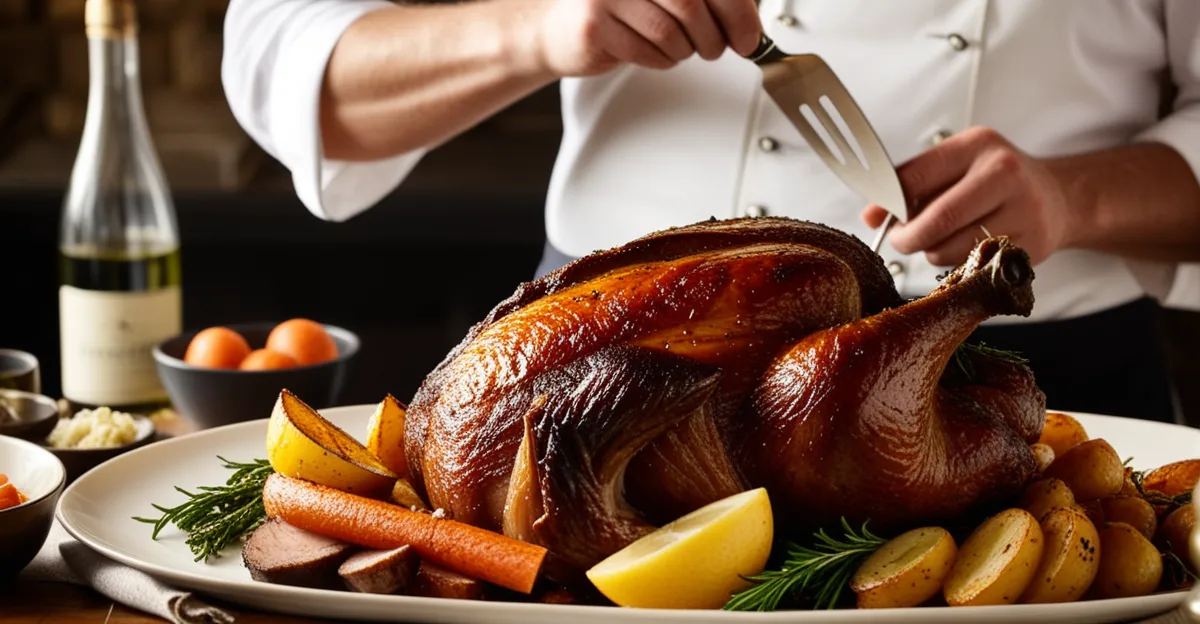Essential preparation steps for a perfect Sunday roast
Preparing a traditional Sunday roast starts with selecting the ideal cut of meat. Popular choices include beef rib, leg of lamb, or pork shoulder—all provide rich flavour and tenderness when cooked correctly. Consider the size and type of meat based on your family’s preferences and the number of servings needed.
To ensure successful roasting, gather essential tools and ingredients before starting. These typically include a robust roasting pan, a reliable meat thermometer, good-quality sea salt, fresh herbs like rosemary or thyme, and basic seasoning such as black pepper and garlic. Having these at hand enables smooth preparation and execution.
Also to see : What are the best techniques for cooking a traditional roast beef dinner?
Advance preparation is key to a flawless Sunday roast preparation. Timing your cooking schedule around the oven preheat, resting time, and side dishes is crucial. Marinating meat several hours or overnight enhances flavour depth and tenderness. Implement a mise en place approach—organise all ingredients and utensils before cooking begins—to streamline the process and avoid last-minute scrambling.
By focusing on meat selection, assembling the right tools, and preparing ingredients thoughtfully in advance, you lay a solid foundation for a classic family roast that’s both satisfying and memorable.
In the same genre : What are the origins and variations of the traditional ploughman’s lunch?
Mastering the roasting process for exceptional results
Perfecting Sunday roast meat cooking requires attention to oven temperatures tailored to each type of meat. For beef, roasting at around 180°C (350°F) balances a browned exterior with a tender interior. Lamb benefits from slightly higher heat near 190°C (375°F) to develop a crispy crust. Pork shoulder demands a longer roasting time at moderate temperatures, typically 160–170°C (320–340°F), to achieve softness without drying out.
Monitoring best roasting times is crucial and depends on meat weight and desired doneness. As a general guide, beef rib needs approximately 20 minutes per 450g for medium-rare, whereas a leg of lamb may take 25 minutes per 450g for medium. Using a meat thermometer ensures precision: aim for 57°C (135°F) for medium-rare beef and 63–70°C (145–160°F) for lamb and pork.
Resting the meat after cooking is vital for juiciness. Allow meat to rest uncovered for 15–20 minutes; this step lets juices redistribute for a moister classic family roast. Carving should follow resting to preserve texture. Proper roasting techniques combined with precise temperature control and resting time guarantee a succulent Sunday roast every time.
Classic side dishes for a traditional Sunday roast
Elevating a traditional Sunday roast hinges on perfectly complementing side dishes. Among the staples, roast potatoes deserve special attention. For crispy, golden results, parboil peeled potatoes, then roughen their surfaces slightly before roasting at high heat with dripping or oil. This technique maximises crunch outside while keeping interiors fluffy.
Yorkshire pudding remains a hallmark of Sunday roast side dishes. Achieving a light, risen pudding involves a simple batter of eggs, flour, and milk or water, along with a scorching hot oiled tray to encourage puffing. Baking time is around 20–25 minutes, ensuring the puddings are crisp and airy.
Classic British vegetables enrich the meal both nutritionally and visually. Carrots, parsnips, and Brussels sprouts are traditional choices. Vegetables should be tender but still vibrant; steaming or roasting with herbs complements the roast meat’s richness without overpowering. Adding a splash of butter or a drizzle of honey enhances natural sweetness.
Finally, gravy for Sunday roast ties components together. Using pan drippings as a base, deglaze with stock or wine, and thicken with a roux or cornstarch slurry. Proper gravy balances seasoning with smooth texture, enriching the plate without heaviness.
Incorporating these sides thoughtfully transforms a meal into a memorable classic family roast experience.







